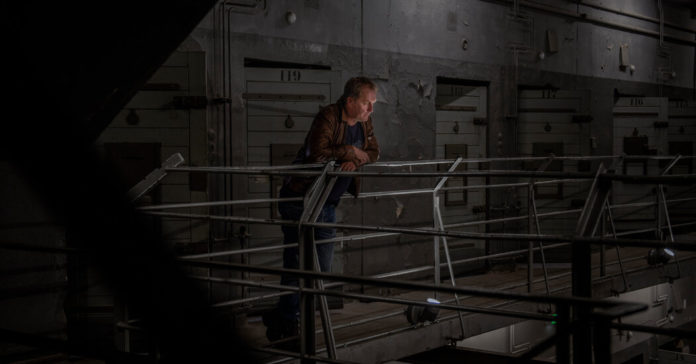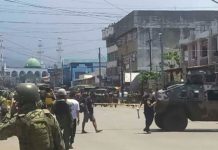BERLIN — They called him the “Führer of Berlin.”
Ingo Hasselbach had been a clandestine neo-Nazi in communist East Berlin, but the fall of the Berlin Wall brought him out of the shadows. He connected with western extremists in the unified city, organized far-right workshops, fought street battles with leftists and celebrated Hitler’s birthday. He dreamed of a far-right party in the parliament of a reunified Germany.
Today, the far-right party Alternative for Germany, known by its German initials AfD, is the main opposition in Parliament. Its leaders march side by side with far-right extremists in street protests. And its power base is the former communist East.
“Reunification was a huge boost for the far right,” said Mr. Hasselbach, who left the neo-Nazi scene years ago and now helps others to do the same. “The neo-Nazis were the first ones to be reunified. We laid the foundation for a party like the AfD. There are things we used to say that have become mainstream today.”
As it marks the 30th anniversary of reunification on Saturday, Germany can rightly celebrate being an economic powerhouse and thriving liberal democracy. But reunification has another, rarely mentioned legacy — of unifying, empowering and bringing into the open a far-right movement that has evolved into a disruptive political force and a terrorist threat, not least inside key state institutions like the military and police.
“Today’s far-right extremism in Germany cannot be understood without reunification,” said Matthias Quent, a far-right extremism expert and director of an institute that studies democracy and civil society in the eastern state of Thuringia. “It liberated the neo-Nazis in the East from their underground existence, and it gave the far-right in the West access to a pool of new recruits and whole swathes of territory in which to move without too much oversight.”
For years, German officials trusted that a far-right party could never again be elected into Parliament and dismissed the idea of far-right terrorist networks. But some now worry that the far-right structures established in the years after reunification laid the groundwork for a resurgence that has burst into view over the past 15 months.
Far-right terrorists killed a regional politician on his front porch near the central city of Kassel, attacked a synagogue in the eastern city of Halle and shot dead nine people of immigrant descent in the western city of Hanau.
This summer the government took the drastic step of disbanding an entire military company in the special forces after explosives, a machine gun and SS paraphernalia were found on the property of a sergeant major in the eastern state of Saxony. A disproportionate number — about half — of those suspected of far-right extremism inside that unit, the KSK, were from the former East, its commander said.
Nationalism and xenophobia are more ingrained in the former East, where the murderous history of World War II was never confronted as deeply on a societal level as it was in the former West. The AfD scores twice as many votes in the eastern states, where the number of far-right hate crimes is higher than in western ones.
Officially, there were no Nazis in old East Germany. The regime defined itself in the tradition of communists who had resisted fascism, giving rise to a state doctrine of remembrance that effectively exculpated it from wartime atrocities. Far-right mobs who beat up foreign workers from fellow socialist states like Cuba or Angola were classified as “rowdies” led astray by western propaganda.
But a potent neo-Nazi movement was growing underground. In 1987, Bernd Wagner, a young police officer in East Berlin, estimated that there were 15,000 “homegrown” violent neo-Nazis, of whom 1,000 were repeat offenders. His report was swiftly locked away.
Two years later, as tens of thousands took to the streets in anti-communist protests that eventually brought down the regime, the pro-democracy activists were not the only marchers.
“The skinheads were marching, too,” Mr. Wagner recalled.
Before reunification, the far-right scene in West Germany was small and aging, but now western neo-Nazis flocked east to offer “reconstruction aid” and unexpectedly found a refuge. Behind the wall, the East had been frozen in time, a largely homogeneous white country where nationalism had been allowed to live on.
“The leaders of the western scene thought they were in paradise,” Mr. Hasselbach recalled.
Since then the East has become the home of choice for several prominent western extremists. Götz Kubitschek, a leading far-right intellectual from Swabia who wants to preserve the “ethno-cultural identity” of Germany, bought a rural manor house in the East, which serves as the headquarters for his far-right publishing house and research institute.
So did Björn Höcke and Andreas Kalbitz, two westerners who became leaders of the most radical factions of the AfD in the former East.
“The East has become a sort of retreat for the far right,” Mr. Quent said, “a place where Germany is still Germany and where men are still men.”
But the infatuation with the East is also strategic, he said. “There is a sense among far-right extremists: ‘We can’t win in the West, but we can win in the East and then, from a position of strength, we will take on the West.’”
Reunification also provided a physical space in which far-right members could move and train. Secret neo-Nazi training camps were held at abandoned Soviet military bases. At one of them, on the island of Rügen in the Baltic Sea, Mr. Hasselbach took part in workshops on forging identity papers, bomb making, guerrilla warfare and “silent killing.”
The initial years after reunification were so tumultuous that security services were incapable of controlling this coalescing extremist movement.
“In the eastern states there was no mature structure for a domestic intelligence service,” Thomas Haldenwang, president of the domestic intelligence office, said in an interview. “The agencies in the new states had to be built from nothing.”
During the early 1990s, a wave of racist violence swept through Germany, much of it in the East. Foreigners were chased, beaten up and sometimes killed. Asylum homes were firebombed. Buses of immigrants were attacked. Sometimes eastern onlookers would watch, clap or join in.
“You could see that something was shifting and not just on the fringes,” said Volkhard Knigge, a historian. “Otherwise the AfD would not be so strong today.”
In the early 1990s, Mr. Knigge moved east to run the memorial at the former concentration camp in Buchenwald. He was startled by the abundance of Nazi memorabilia like Hitler’s “Mein Kampf” for sale at flea markets and by the mob of angry young neo-Nazis who would gather on the historic theater square, shouting xenophobic slogans.
“We thought democracy had won,” Mr. Knigge said. “The West thought this was the end of history. But for nationalists, this was a revision of history.”
Reunification brought two strains of nationalism together, said Anetta Kahane, a Jewish anti-racism activist — western-style nationalist conservatism and a more radical eastern social-revolutionary variety. On their own, neither had been powerful enough to stir a political movement.
“It was the marriage of the two that made the AfD possible,” said Ms. Kahane, who runs the Amadeu-Antonio Foundation, named after a Black Angolan who was beaten to death with a baseball bat by neo-Nazis less than two months after reunification.
For most Germans, the new century was defined by progress. Chancellor Angela Merkel, an easterner, has personified western liberal values. When the country was host to the soccer World Cup in 2006, a confidently multicultural Germany was on display, in what many at the time called “a summer fairy-tale.”
“I wanted to believe that that’s who we are as a country — and I did believe it,” said Tanjev Schultz, an author and journalism professor. “But it wasn’t true.”
That summer, the National Socialist Underground, a far-right terrorist group that had come out of the extremist networks formed in East Germany, was engaged in an immigrant killing spree that police would not discover until 2011.
Between 2000 and 2007, the group killed nine immigrants and a police officer, even as paid informers of the intelligence agency helped hide its leaders and build up its network.
Mr. Hasselbach said he was not surprised to see the recent revelations of far-right infiltration of security services. When he was still a neo-Nazi, he said, friendly police officers would warn them before raids or hand them files of leftist enemies.
It was the deadly violence in the early 1990s that made Mr. Hasselbach leave the neo-Nazi scene in 1992. An arson attack on the home of a Turkish family killed two girls and their grandmother. He spent years underground to escape threats from his former far-right compatriots. Then, with Mr. Wagner, the former eastern police officer, he co-founded Exit Germany, an organization that helps extremists leave their networks.
The fortunes of the AfD have ebbed and flowed in recent years. Polls show voter support has dipped to around 10 percent during the pandemic. But the fringes are radicalizing, intelligence officers say.
It worries Mr. Hasselbach and Mr. Wagner.
“The readiness to commit violence today is greater than it’s ever been,” Mr. Hasselbach said.
“Westerners have no feel for how fragile things are,” Mr. Wagner said. “The elites don’t see the post-democratic decline. Easterners have seen a system collapse before.”
Source : Nytimes












